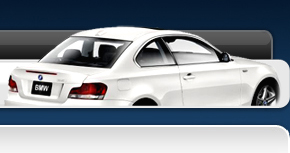


|
|
|
 |
| 03-20-2008, 10:17 PM | #24 |
|
Lieutenant Colonel
 
111
Rep 1,764
Posts |
|
|
Appreciate
0
|
| 03-21-2008, 10:50 AM | #25 |
|
Major
 36
Rep 1,329
Posts |
I understand where you coming from with some of your logic but the first part of your statement here is completely flawed if you have an independent rear suspension. the second part of your statement proves it, if one wheel is loaded it unloads the other wheel. so the larger the rear bar the more effect one side has on the other. therefore reducing the independence of the two sides.
|
|
Appreciate
0
|
| 03-21-2008, 03:05 PM | #26 | |
|
First Lieutenant
  16
Rep 355
Posts |
Quote:
__________________
Alan
08 135I (AW/Coral Red - delivered 3/15/08 -- 13 Audi S4, 83 SC (trackster), 90 C2 (Sally's Carrera), 04 Avalanche Blingmobile  |
|
|
Appreciate
0
|
| 03-21-2008, 11:04 PM | #27 | |
|
Lieutenant Colonel
 
111
Rep 1,764
Posts |
Quote:
You’re saying that a larger sway bar effect the ability of the suspension to work independently from opposing sides is simply not true. There is no reduction in travel nor is there an induced displacement of the suspension due to a sway bar size increase. The unloading comments is exactly as it sound. The end results is reduced normal forces on the inside wheel and I think your scenes of scale of this force may be out or proportions. I assuming you got this idea off the internet and they never took the next step to explain it? You need to think this over because I’m not sure were your heading with this. You do realize that the sway bar is nothing more than torsional spring and is not a member that will impose enough force to affect the suspension ability to work independently when engineered correctly. It is certainly possible to create a stiff enough torsion spring (sway bar) that it would in fact become a ridgid member at given load rate for a specific suspension design then the theory is true. However, this is like saying we will install 1500 lb/in spring of the front of the car. I am not willing to discuss such unpractical applications nor does it serve any purpose for arguments sake as it beyond the scope of design intent of this component. I think you need to explain why you feel why the normal forces reduction on the inside wheel is such a negative thing other than inside wheel spin with an open differential. There is obviously is a lot factors involved such as wheel travel, spring stiffness, dampening, overall suspension design and most importantly application…what one wants to archive in a setup. This is why I say not to think in generalities for know application and then try to apply it to another as they are mostly wrong. Orb |
|
|
Appreciate
0
|
Post Reply |
| Bookmarks |
| Thread Tools | Search this Thread |
|
|